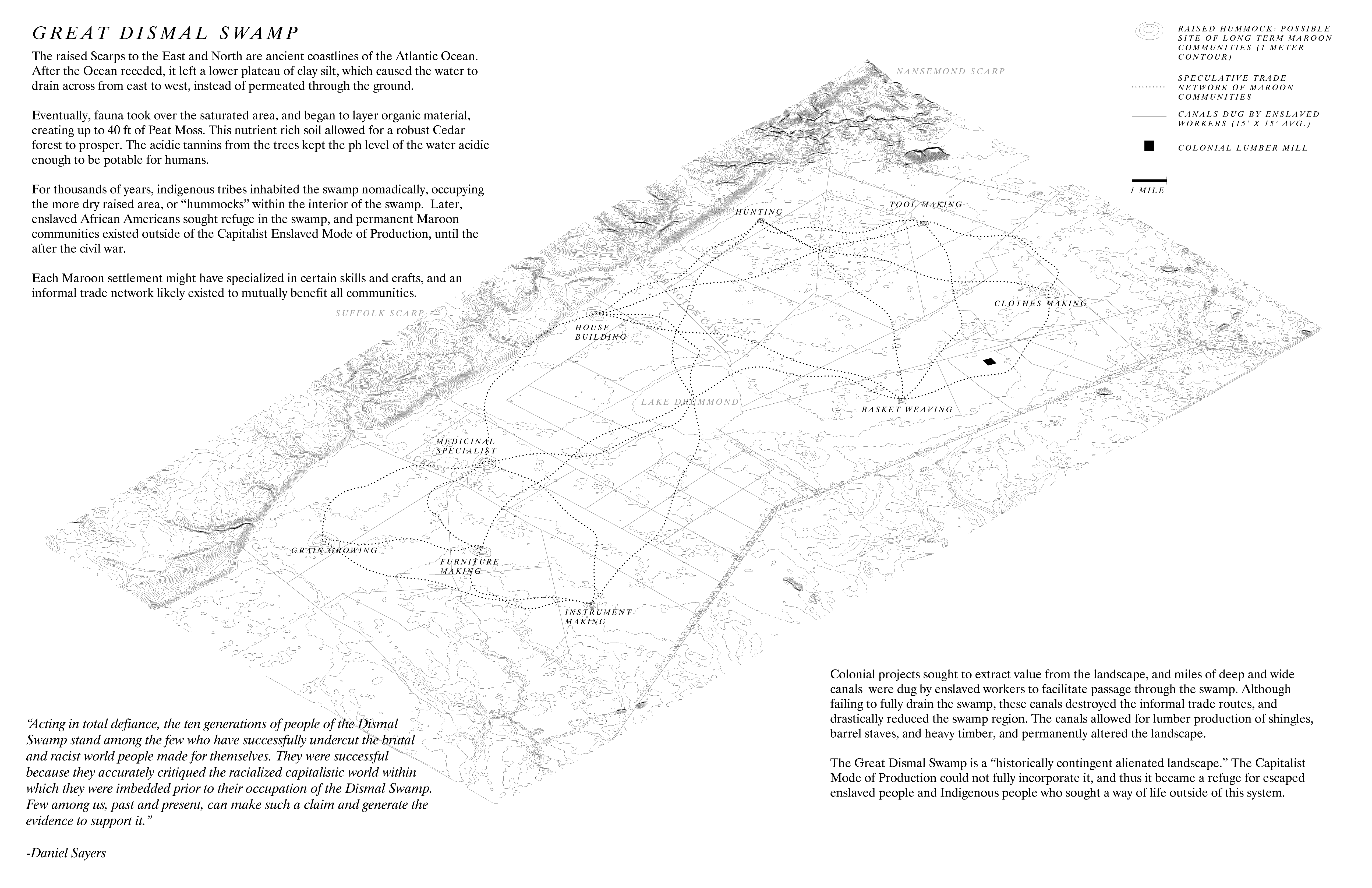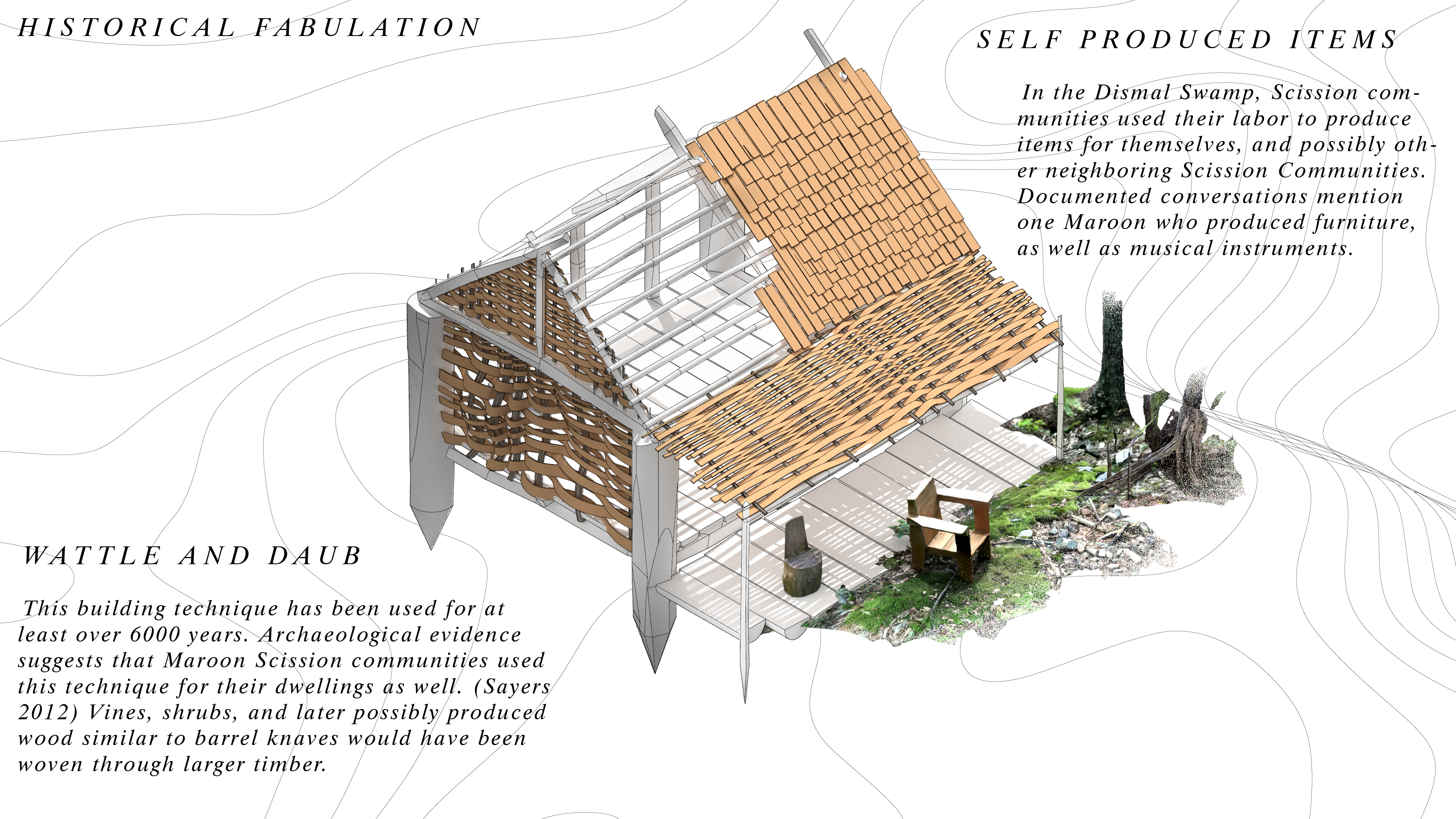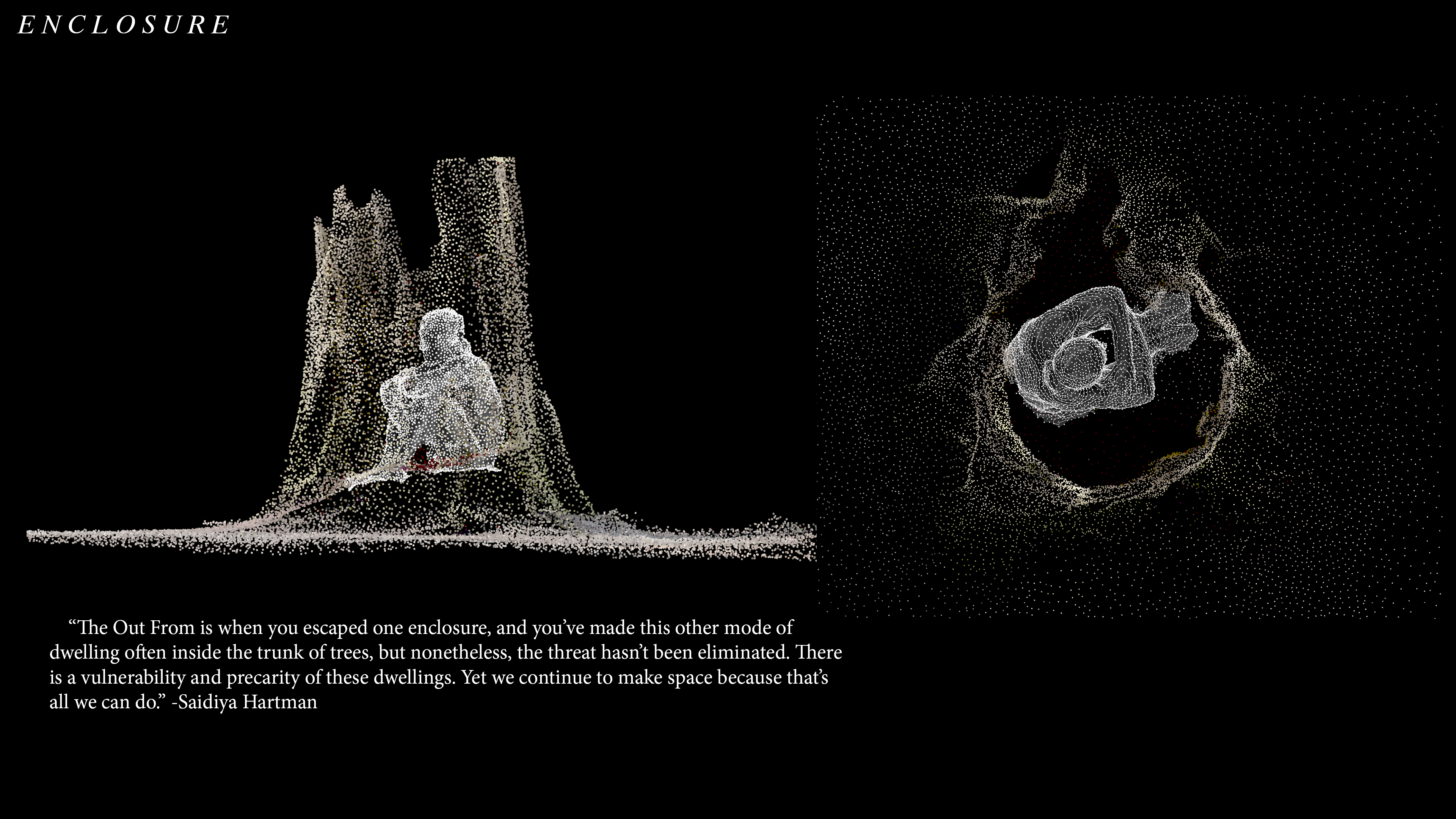Invisible Architectures
Maronnage in the Great Dismal Swamp
Produced in the studio class of Prof. Jerome Haferd at the Spitzer School of Architecture in 2022.
“a history of black thought and practice is devoted to the labor of trying to produce an outside within an inside, to create an opening within a world of terror that is in many ways uninhabitable.”
-Saidiya Hartman
By remaining unseen, Maroon Communities evaded a Capitalist Enslaved Mode Of Production for multiple generations. As a result, their history is largely invisible as well. This project seeks to illuminate these brilliant and radical thinkers.

For thousands of years, indigenous tribes inhabited the swamp nomadically, occupying the more dry raised area, or “hummocks” within the interior of the swamp. Later, enslaved African Americans sought refuge in the swamp, and permanent Maroon communities existed outside of the Capitalist Enslaved Mode of Production, until the after the civil war.
Each Maroon settlement might have specialized in certain skills and crafts, and an informal trade network likely existed to mutually benefit all communities.

Colonial projects sought to extract value from the landscape, and miles of deep and wide canals were dug by enslaved workers to facilitate passage through the swamp. Although failing to fully drain the swamp, these canals destroyed the informal trade routes, and drastically reduced the swamp region. The canals allowed for lumber production of shingles, barrel staves, and heavy timber, and permanently altered the landscape.

“Acting in total defiance, the ten generations of people of the Dismal Swamp stand among the few who have successfully undercut the brutal and racist world people made for themselves. They were successful because they accurately critiqued the racialized capitalistic world within which they were imbedded prior to their occupation of the Dismal Swamp. Few among us, past and present, can make such a claim and generate the evidence to support it.”
-Daniel Sayer
The raised Scarps to the East and North are ancient coastlines of the Atlantic Ocean. After the Ocean receded, it left a lower plateau of clay silt, which caused the water to drain across from east to west, instead of permeated through the ground.
Eventually, fauna took over the saturated area, and began to layer organic material, creating up to 40 ft of Peat Moss. This nutrient rich soil allowed for a robust Cedar forest to prosper. The tannins from the trees kept the ph level of the water acidic enough to be potable for humans.
![]()
Above is a map of Land Use in the Great Dismal Swamp, which is divided by the Virginia and North Carolina Border.
The Great Dismal Swamp is a “historically contingent alienated landscape.” The Capitalist Mode of Production could not fully incorporate it, and thus it became a refuge for escaped enslaved people and Indigenous people who sought a way of life outside of this system.
![]()
Eventually, fauna took over the saturated area, and began to layer organic material, creating up to 40 ft of Peat Moss. This nutrient rich soil allowed for a robust Cedar forest to prosper. The tannins from the trees kept the ph level of the water acidic enough to be potable for humans.

Above is a map of Land Use in the Great Dismal Swamp, which is divided by the Virginia and North Carolina Border.
The Great Dismal Swamp is a “historically contingent alienated landscape.” The Capitalist Mode of Production could not fully incorporate it, and thus it became a refuge for escaped enslaved people and Indigenous people who sought a way of life outside of this system.

In the Liminal space between the maroon
communities and the lumber mill, an exchange of goods and services was made.
Once the canals were dug, lumber was extracted and produced into sellable goods, such as shingles and barrel knaves. Enslaved workers were then forced to produce these items as well.

Presumably, one could buy their freedom for $200.
There are written accounts of arranged barters. An enslaved worker might have brought the Marroon supplies such as tools, nails. In exchange, the Marroon would assist the enslaved worker to produce an excess quota to save enough to attain their freedom.

The Out From:
Petite (Temporary) Marronage


“The Out From is when you escaped one enclosure, and you’ve made this other mode of dwelling often inside the trunk of trees, but nonetheless, the threat hasn’t been eliminated. There is a vulnerability and precarity of these dwellings. Yet we continue to make space because that’s all we can do.” -Saidiya Hartman
